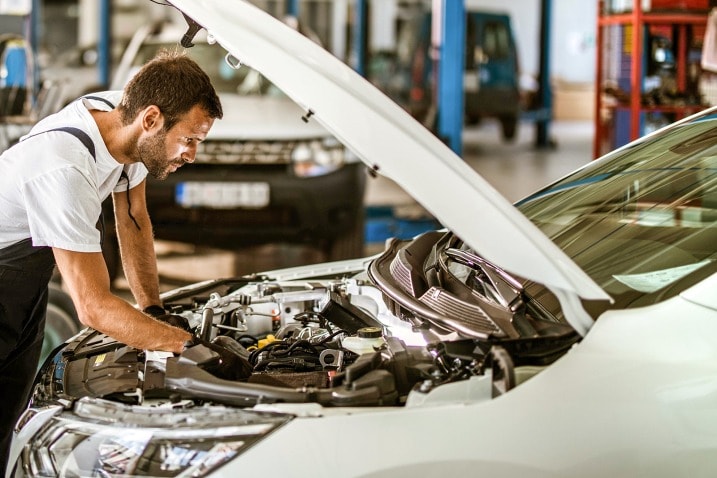All Categories
Featured

Few points are much more alarming for a driver than the unexpected illumination of the check engine light (CEL) on the control panel. While it may trigger prompt worry, comprehending what this light represents can equip you to deal with the situation efficiently. Let's discover the possible reasons behind the CEL and the steps to solve it.
What Does the Examine Engine Light Mean? The CEL is part of your vehicle's onboard diagnostics (OBD) system. It keeps an eye on a selection of systems within the automobile, consisting of emissions, gas performance, and overall engine efficiency. When the system finds a mistake or abnormality, it activates the CEL to notify the chauffeur.
Solid Light: Indicates a non-critical issue, such as a small sensor malfunction. It still needs attention to avoid long-term damages. Flashing Light: Signals a serious problem, like an engine misfire, that requires prompt attention to prevent substantial damage. Typical Reasons for the Check Engine Light. Below are a few of one of the most frequent reasons of a CEL, varying from basic to complicated:
Loose Gas Cap:

A loosened or broken gas cap can disrupt the fuel system, causing the light. This is just one of the simplest concerns to deal with-- just tighten up or replace the cap. Oxygen Sensing Unit Failing:
The oxygen sensor determines the air-to-fuel proportion for optimal combustion. A damaged sensing unit can lead to decreased gas effectiveness and higher exhausts. Ignition System or Ignition Coil Concerns:
These parts are crucial for the combustion procedure. Worn-out spark plugs or malfunctioning coils can create misfires and rough engine efficiency. Catalytic Converter Issues:
This component minimizes harmful discharges from your car. Failing to deal with various other engine problems can lead to catalytic converter damages. Mass Air Flow (MAF) Sensing Unit Failure:
The MAF sensing unit makes certain the appropriate amount of air combines with fuel. A dirty or falling short MAF sensor can decrease power and gas performance. Steps to Take When the CEL Begins. Don't Panic:
Take a minute to observe your car's performance. Is it driving usually, or are there signs and symptoms like lowered power or odd sounds? Examine the Gas Cap:
If necessary,Tighten or reseat it. This basic fix resolves lots of CEL circumstances. Utilize an OBD-II Scanner:
Plugging in a scanner offers particular trouble codes that identify the issue. Several automobile components stores use this service absolutely free. Check out a Mechanic if Essential:
If the CEL continues to be on or flashes, have a professional inspect your auto. Delaying repairs can lead to much more costly repairs. Preventative Procedures to Stay Clear Of CEL Issues. Regular Upkeep:. Adhere to the supplier's schedule for oil changes, stimulate plug substitutes, and air filter cleaning. Check Key Components:. Occasionally check your gas cap, belts, and hose pipes for wear or damages. Usage Quality Gas and Oil:. Costs products can prevent deposit accumulation that might impact sensing units and engine elements. Why You Ought To Attend To the CEL Quickly. While it's tempting to neglect a strong CEL, laziness can result in serious repercussions. What begins as a minor issue-- like a loose gas cap-- might evolve right into pricey repairs. Attending to the light very early guarantees your automobile continues to be efficient and secure.
Conclusion. The check engine light is not a reason for instant panic, but it needs to never ever be ignored. Understanding its objective and possible triggers equips you to make informed decisions, whether it's a quick gas cap modification or a journey to your mechanic. With appropriate upkeep and prompt action, you can maintain your automobile running smoothly and avoid unnecessary repair services.
Latest Posts
Very Little Effort, Maximum Sparkle: The Bath Fitter Advantage
Published Apr 21, 25
1 min read
Decorative Iron Fence: Sophistication and Stamina
Published Apr 21, 25
2 min read
Specials & Discounts: Unlock Discounts on Vehicle Maintenance at Montclare Auto Repair
Published Apr 21, 25
2 min read
More
Latest Posts
Very Little Effort, Maximum Sparkle: The Bath Fitter Advantage
Published Apr 21, 25
1 min read
Decorative Iron Fence: Sophistication and Stamina
Published Apr 21, 25
2 min read
Specials & Discounts: Unlock Discounts on Vehicle Maintenance at Montclare Auto Repair
Published Apr 21, 25
2 min read